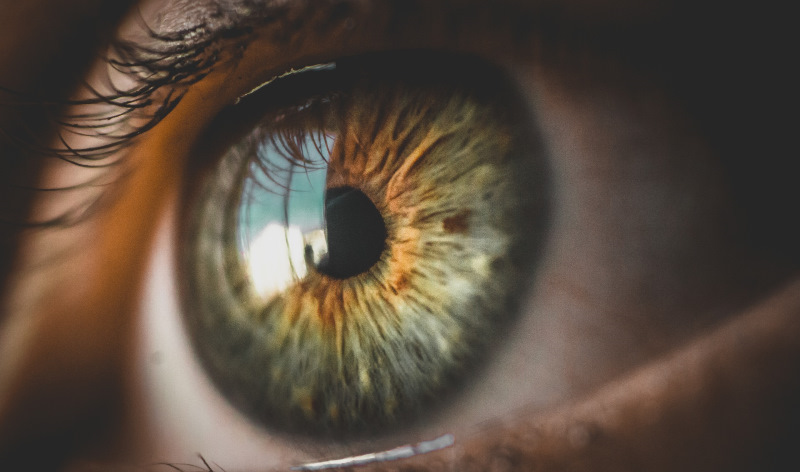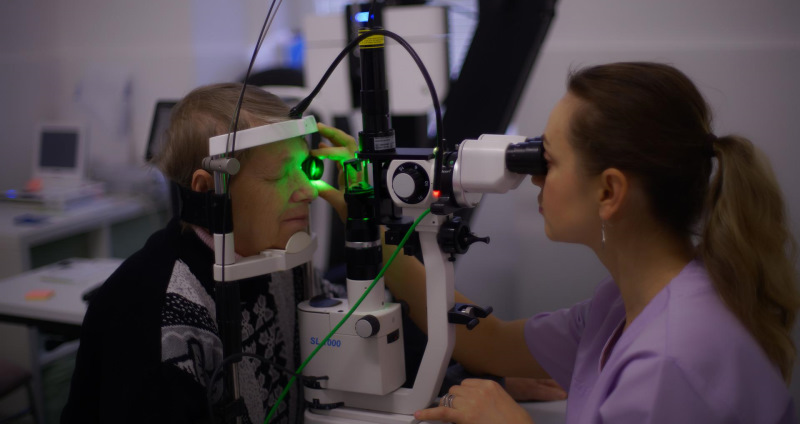The idea of ‘having a stroke’ is well-known – sudden weakness, numbness or confusion caused by a lack of blood flow to the brain. An eye stroke is similar. An eye stroke is the term used to describe the unpleasant feeling of losing vision in your eye. This happens when blood flow to your eye is diminished or blocked altogether. As we’ll explain, there are a number of reasons this can happen, but when the blood flow is blocked, damage has been done to your retina.
When the veins to your retina are blocked, they leak other fluids instead. This causes swelling and cuts off oxygen to your eye. Ultimately, this is what impairs your vision during an eye stroke.
The are four common types of eye strokes, all of which cause the blood to stop flowing to your eye through one route or another. Retinal vein occlusion occurs when either your main vein or small veins become blocked, and retinal artery occlusion is similar but with your arteries instead of veins.
In this blog post, we’ll uncover the main causes and symptoms of an eye stroke, along with the methods for diagnosis, treatment, prevention and recovery.
Eye Stroke Causes

As we’ve discussed, an eye stroke occurs when the retina’s arteries or veins become blocked, ceasing blood flow to the eye. In the majority of cases, this happens because of either a narrowing of the blood vessel, a clot, or not enough blood pressure.
Your eye is an organ just like your heart, lungs and pancreas are. And like any organ, your eyes rely on healthy blood flow. If the blood being pumped throughout your body is not healthy, that’s when you’re going to run into health problems like clots, poor blood pressure, and narrowing of the blood vessels.
It turns out there are a number of underlying conditions that can increase your chances of having an eye stroke. Similar to the more well-known brand of stroke in the brain, it’s difficult to trace causation to an eye stroke. There isn’t one thing you can do that will guarantee you an eye stroke.
The American Academy of Ophthalmology states that men over 50 are at the greatest risk of eye strokes. There is also a higher risk for people who have personal experience or a family history with certain conditions such as diabetes, heart disease, glaucoma, hypertension, high cholesterol, and rare blood disorders. And unsurprisingly, smoking is a great way to boost your chances of an eye stroke.
Eye Stroke Symptoms
Because an eye stroke is often painless, the first symptoms of an eye stroke are usually vision loss in one eye, or a sudden change in a vision. There are a number of other symptoms we’ll get to, but keep in mind eye strokes typically affect just one eye. If both eyes are impacted, it’s likely something else. Here are some of the main symptoms of an eye stroke:
- Partial Vision Loss
Not everyone goes completely blind during an eye stroke. In some cases, you vision may go blurry. You could also lose your peripheral vision during an eye stroke, or notice an increased sensitivity to light.
- Total Vision Loss
Total vision loss is often the case with an eye stroke. It can come on suddenly or slowly, and happens often during sleep. If you lose vision suddenly, you could be at risk of a cerebral stroke. If so, seek medical attention immediately.
- Floaters
It’s common to have what feel like blind spots in your eye when you’re having an eye stroke. Either in your upper or lower half of your eye, dark spots will block your vision – but not completely. These are called ‘floaters’. Floaters are clumps of blood and other fluids in the middle of your eye that have leaked out.
- Pressure Pain
Most of the time, eye strokes are completely painless, and take the form of vision loss in one way or another. But it is possible to feel a painful pressure in your eye as well.
Make no mistake, regardless of the severity of your symptoms, an eye stroke is serious. The longer you leave it, the worse it’ll get. So if you do have an eye stroke, make sure to seek medical attention right away.
How are Eye Strokes Diagnosed?

There are a number of tests that can be done to determine if you’ve had an eye stroke or not. If your eye doctor believes you have, you’ll start with a standard eye exam, checking your vision, eye pressure, and retinal health. They’ll also want to know about your medical history as is relates to cardiovascular health, diabetes and other conditions affecting the blood and heart. Comparing results with your one good eye, the doctor may also run one or several of these tests:
- Dilating Eyes
- Ophthalmoscopy
- Optical Coherence Tomography (OCT)
- Tonometry
- Fluorescein Angiography
Eye Stroke Treatment
There are a number of possible treatments for an eye stroke, but therapy will depend on how much damage the eye stroke inflicted to the eye. That’s why it’s so important to seek medical attention right away when you experience any of the eye stroke symptoms. Your overall health is taken into consideration as well when looking at treatment.
There are various treatments available, but almost all involve either dissolving or moving the blog clot, widening the retinal arteries, or improving the swelling and circulation.
There are a variety of medications available that have the ability to remove or destroy blood clots. Of course, this type of medication comes with side effects.
Corticosteroids are a type of drug that can be injected into the to improve swelling and circulation, leading to better blood flow to the retina. In the worst cases, you can even have this drug implanted in your eye in the form of a small pellet.
If you doctor believes that medicine is not necessary, lots of healing can be done by simply massaging the eye. This can help relax the blood vessels and improve circulation to your eye.
Laser treatment can be used to target edema or swelling in the macula area – the part of the eye that’s responsible for your central vision. This type of treatment can have a great affect on vision.
There’s even the option to use oxygen to treat an eye stroke. High pressure (or hyperbaric) oxygen therapy has been shown to improve vision if it is done within 24 hours of the original symptoms.
Anti-vascular endothelial growth factor drugs can also be injected directly into the eye, similar to corticosteroids. These drugs are designed to reduce new blood vessel growth and swelling, and can be used to treat a number of conditions.
Prevention

The number one risk factor for eye strokes is an unhealthy heart. Heart disease, hypertension, diabetes and the like play a big part. A study published in Eye in the National Library of Medicine found that 64% of eye stroke patients had at least one underlying, undiagnosed heart disease risk factor.
For you, that means the best thing you can do to prevent an eye stroke is take good care of your heart. There is a dizzying amount of content available to help you do just that, but most is centered around the practice of good habits like exercise, nutrition, and avoiding smoking.
Eye Stroke Recovery Time
An eye stroke can lead to serious complications and a long recovery time. But in less serious cases, it’s possible to make a quick recovery. For at least one year, it will be important to remain in close contact with your doctor, reporting any symptoms and progress.
Most importantly, because of the close ties to heart health, your recovery should be geared towards keeping your heart in the best shape possible. That means following your doctor’s orders regarding nutrition and exercise – and of course, avoiding cigarettes.
Some eye stroke patients will never recover their full vision, and may go blind. Others will regain their vision completely. But many people are left somewhere in between, regaining some vision but not all.
Ultimately, like many things, early detection, treatment, and recovery will play a big part in how fast and well you’re able to recover from an eye stroke. If you’re ready to book an eye exam, our family run eye clinic here in Victoria, BC can help. Easily book an appointment online on our website: Inner Harbour Optometry.